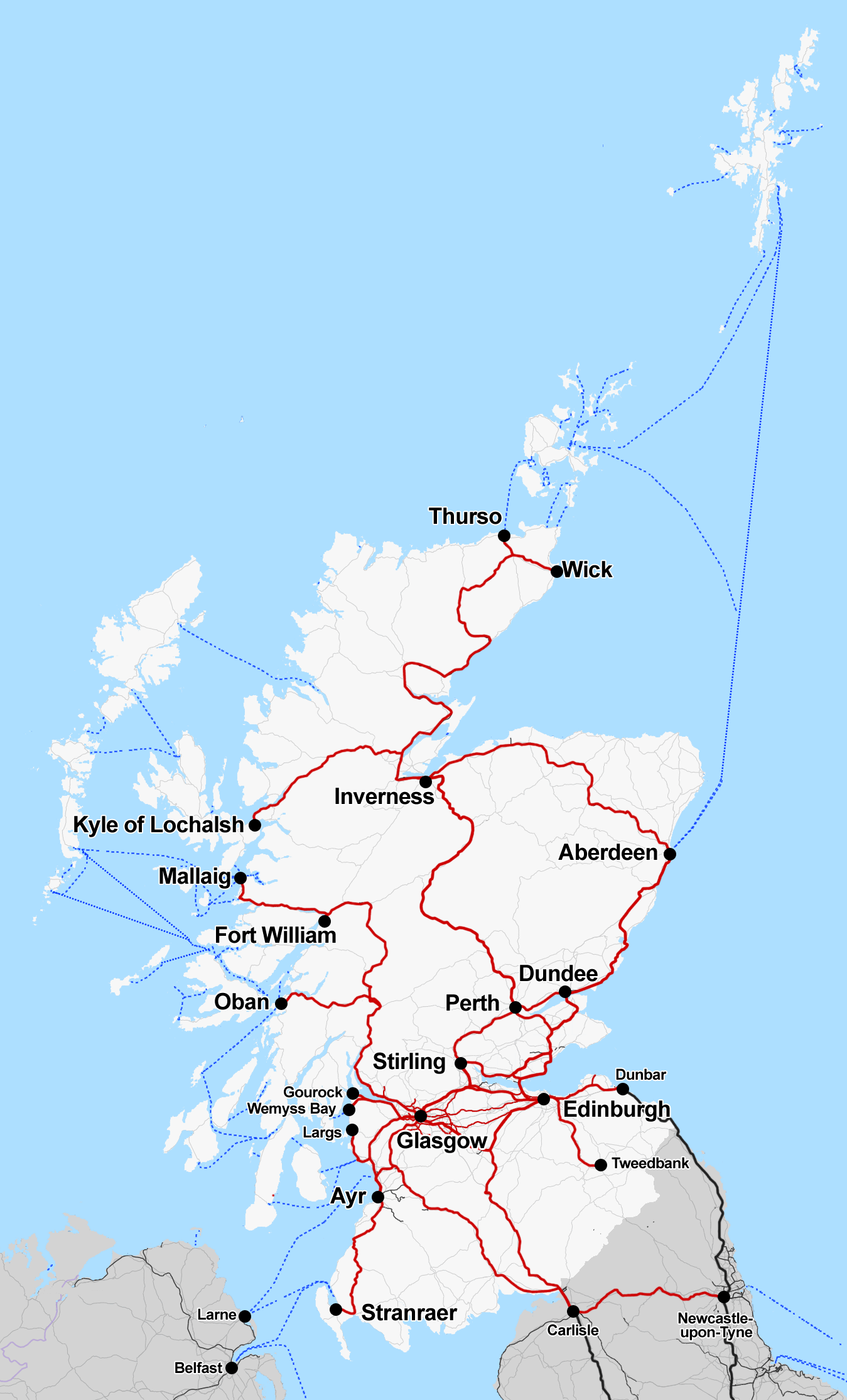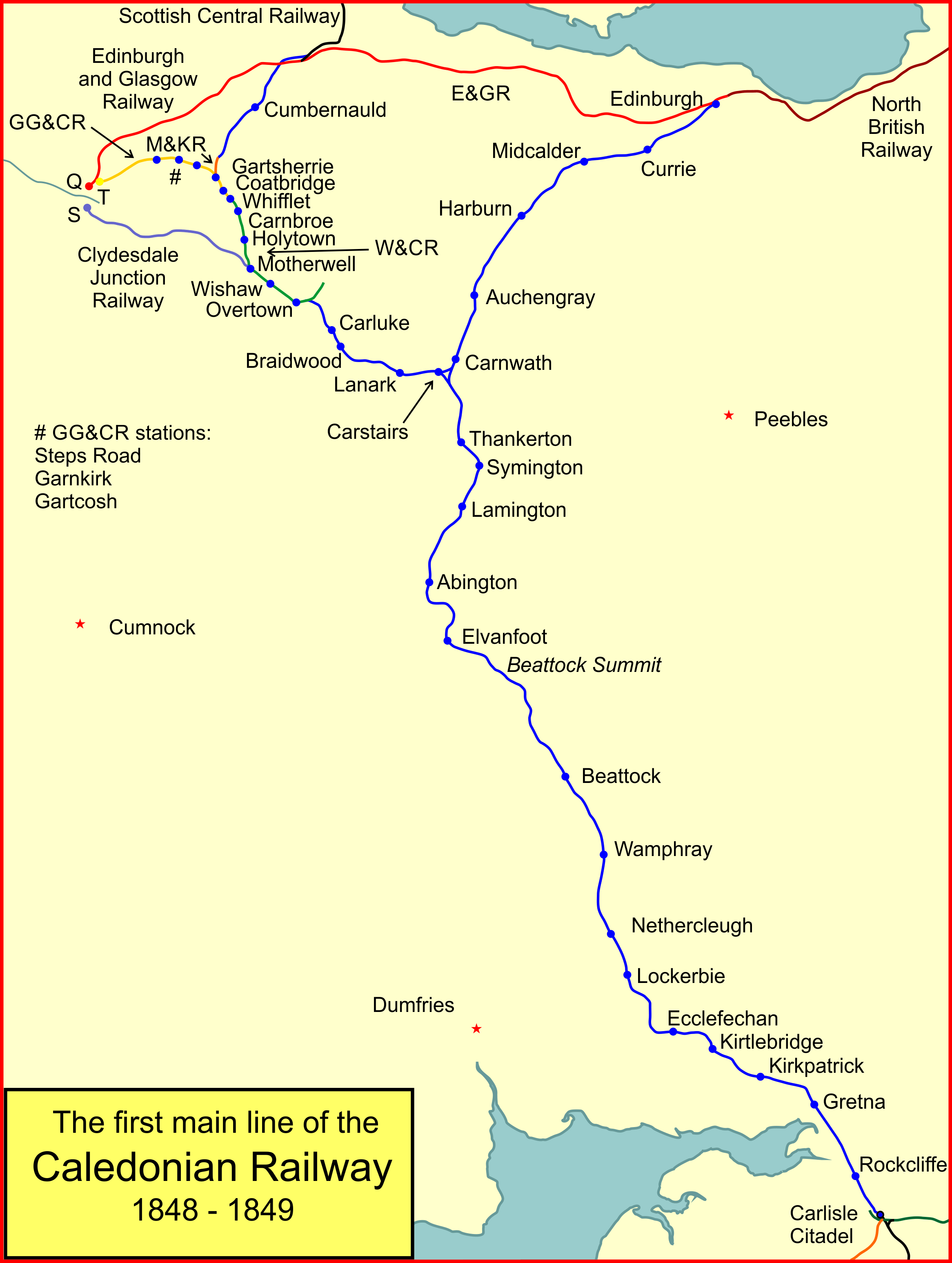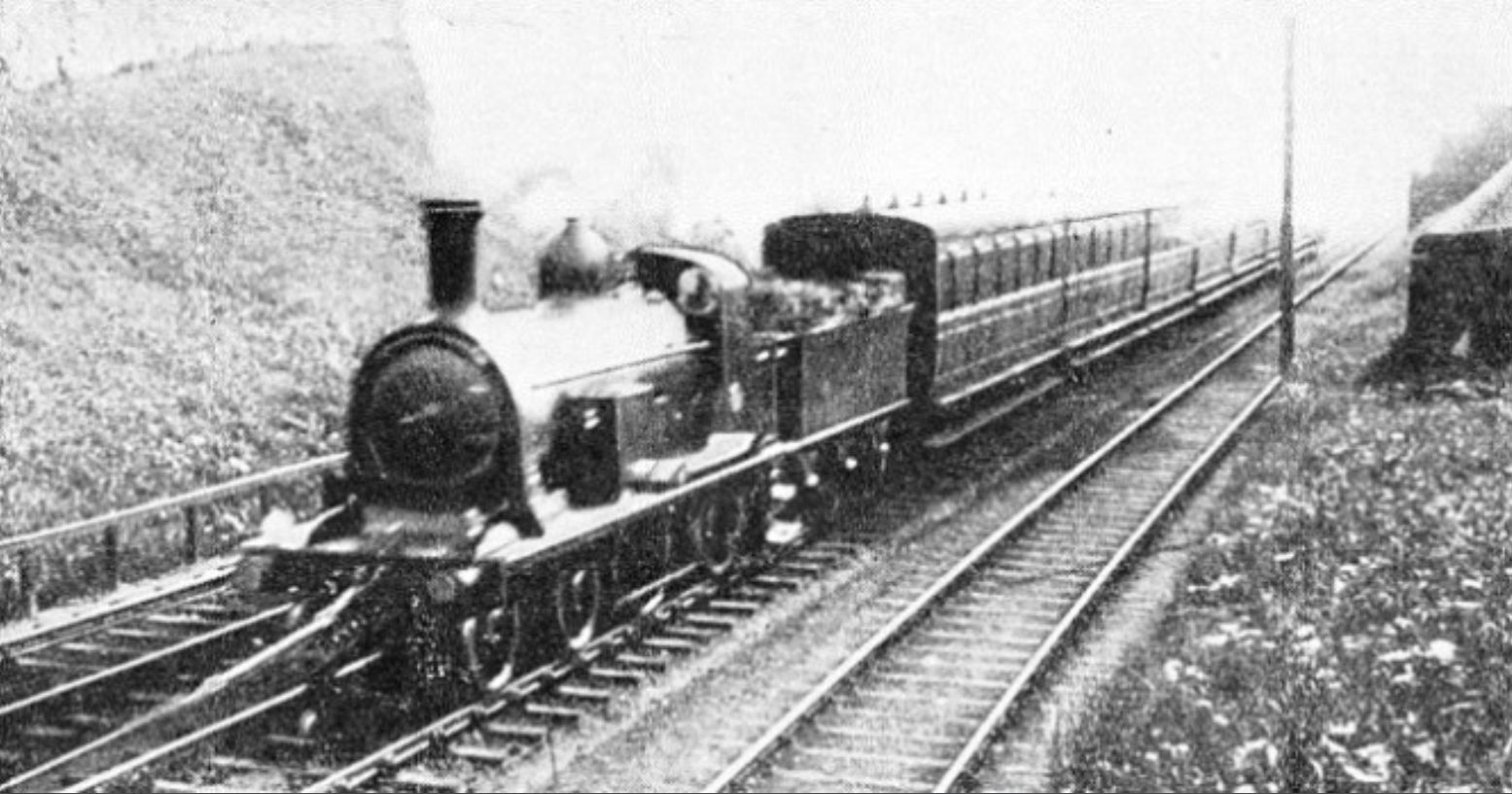|
West Highland Line
The West Highland Line ( – "Iron Road to the Isles") is a railway line linking the ports of Mallaig and Oban in the Scottish Highlands to Glasgow in Central Scotland. The line was voted the top rail journey in the world by readers of independent travel magazine ''Wanderlust'' in 2009, ahead of the notable Trans-Siberian Railway, Trans-Siberian line in Russia and the PeruRail#Cusco_-_Aguas_Calientes_.28Machu_Picchu.29, Cuzco to Machu Picchu line in Peru. The ScotRail website has since reported that the line has been voted the most scenic railway line in the world for the second year running. The West Highland Line is one of two railway lines that access the remote and mountainous west coast of Scotland, the other being the Kyle of Lochalsh Line which connects Inverness with Kyle of Lochalsh. The line is the westernmost railway line in Great Britain. At least in part, the West Highland Line is the same railway line as that referred to as the West Highland Railway. History The ... [...More Info...] [...Related Items...] OR: [Wikipedia] [Google] [Baidu] |
First ScotRail
First ScotRail was a train operating company in Scotland owned by FirstGroup. It operated the ScotRail franchise between October 2004 and March 2015. On 17 October 2004, First ScotRail took over operations from the incumbent franchisee, ScotRail (National Express), National Express. First ScotRail operated most commuter and long-distance services within Scotland, and some services to northern England, as well as the Caledonian Sleeper to London. Of FirstGroup's four train operating companies, ScotRail was the second largest (in terms of number of passenger journeys 2013–14) after Great Western Railway (train operating company), First Great Western at the time of the termination of its franchise. During April 2008, Transport Scotland granted a three-year franchise extension to First ScotRail. In May 2009, First ScotRail announced a crackdown on fare-dodging due to abuse of the Flexipass ticket system. One month later, it was alleged that ScotRail's passenger figures were su ... [...More Info...] [...Related Items...] OR: [Wikipedia] [Google] [Baidu] |
Trans-Siberian Railway
The Trans-Siberian Railway, historically known as the Great Siberian Route and often shortened to Transsib, is a large railway system that connects European Russia to the Russian Far East. Spanning a length of over , it is the longest railway line in the world. It runs from the city of Moscow in the west to the city of Vladivostok in the east. During the period of the Russian Empire, government ministers—personally appointed by Alexander III and his son Nicholas II—supervised the building of the railway network between 1891 and 1916. Even before its completion, the line attracted travelers who documented their experiences. Since 1916, the Trans-Siberian Railway has directly connected Moscow with Vladivostok. , expansion projects remain underway, with connections being built to Russia's neighbors Mongolia, China, and North Korea. Additionally, there have been proposals and talks to expand the network to Tokyo, Japan, with new bridges or tunnels that would connect the main ... [...More Info...] [...Related Items...] OR: [Wikipedia] [Google] [Baidu] |
Mallaig Extension Railway
The Mallaig Extension Railway is a railway line in Highland, Scotland. It runs from Banavie Junction (New) on the Banavie Pier branch of the West Highland Railway to Mallaig. The previous "Banavie Junction" closer to Fort William was renamed "Mallaig Junction" upon opening of the Mallaig Extension Railway. The line is still open as part of the West Highland Line. Opening The railway received Royal Assent on 31 July 1894. The line opened on 1 April 1901. It is famous for the concrete structures built along the line by Sir Robert McAlpine Sir Robert McAlpine Limited is a family-owned building and civil engineering company based in Hemel Hempstead, England. It carries out engineering and construction in the infrastructure, heritage, commercial, arena and stadium, healthcare, educ ..., the most notable of which is Glenfinnan Viaduct. Connections to other lines * West Highland Railway at Banavie Junction (new) Sources * * * * Thomas, John (1965). ''The West Hig ... [...More Info...] [...Related Items...] OR: [Wikipedia] [Google] [Baidu] |
Callander And Oban Railway
The Callander and Oban Railway company was established with the intention of linking the sea port of Oban to the railway network. This involved a long line from Callander through wild and thinly populated terrain, and shortage of money meant that the line was opened in stages from 1866 to 1880. The line improved the economy of Oban, especially for the fishing trade and for tourism, but the winter traffic was limited. The company built a branch to Ballachulish, which included the construction of Connel Bridge, a remarkable bridge at Connel over Loch Etive. The branch opened in 1903, but although it opened up remote areas it was never commercially successful. It closed in 1966. The main line was crossed by the West Highland Line at Crianlarich, where a connecting spur was constructed by the West Highland Line in 1897. The C&OR section between Callander and Crianlarich was closed in September 1965. However, the section between Crianlarich and Oban is still in use today, with trains ... [...More Info...] [...Related Items...] OR: [Wikipedia] [Google] [Baidu] |
North British Railway
The North British Railway was one of the two biggest of the five major Scottish railway companies prior to the 1923 Grouping. It was established in 1844, with the intention of linking with English railways at Berwick. The line opened in 1846, and from the outset the company followed a policy of expanding its geographical area, and competing with the Caledonian Railway in particular. In doing so it committed huge sums of money, and incurred shareholder disapproval that resulted in two chairmen leaving the company. Nonetheless, the company successfully reached Carlisle, where it later made a partnership with the Midland Railway. It also linked from Edinburgh to Perth and Dundee, but for many years the journey involved a Train ferry, ferry crossing of the Forth and the Tay. Eventually the North British built the Tay Bridge, but the structure Tay Bridge disaster, collapsed as a train was crossing in high wind. The company survived the setback and opened a second Tay Bridge, follow ... [...More Info...] [...Related Items...] OR: [Wikipedia] [Google] [Baidu] |
Caledonian And Dumbartonshire Junction Railway
The Caledonian and Dumbartonshire Junction Railway (C&DJR) was a Scottish railway opened in 1850 between Bowling and Balloch via Dumbarton. The company had intended to build to Glasgow but it could not raise the money. Other railways later reached Dumbarton, and the C&DJR was taken over by the larger Edinburgh and Glasgow Railway in 1862. It later became simply a branch of the larger North British Railway network. When the rival Lanarkshire and Dumbartonshire Railway proposed a line to Balloch running close nearby, agreement was reached to make part of the former C&DJR line jointly owned, and this was done in 1896, forming the Dumbarton and Balloch Joint Railway. Most of the original C&DJR line continues in use at the present day. History Before authorisation William Stirling established a textile dyeworks at Cordale, near Renton in the valley of the River Leven, in 1770. Other industrialists in textile finishing established nearby and the area between Balloch and Dumbarton ... [...More Info...] [...Related Items...] OR: [Wikipedia] [Google] [Baidu] |
Caledonian Railway
The Caledonian Railway (CR) was one of the two biggest of the five major Scottish railway companies prior to the 1923 Grouping. It was formed in 1845 with the objective of forming a link between English railways and Glasgow. It progressively extended its network and reached Edinburgh and Aberdeen, with a dense network of branch lines in the area surrounding Glasgow. It was absorbed into the London, Midland and Scottish Railway in 1923. Many of its principal routes are still used, and the original main line between Carlisle, Cumbria, Carlisle and Glasgow is in use as part of the West Coast Main Line railway (with a modified entry into Glasgow itself). Introduction In the mid-1830s, railways in England evolved from local concerns to longer routes that connected cities, and then became networks. In Scotland it was clear that this was the way forward, and there was a desire to connect the Central Belt to the incipient English network. There was controversy over the route that such ... [...More Info...] [...Related Items...] OR: [Wikipedia] [Google] [Baidu] |
Lanarkshire And Dumbartonshire Railway
The Lanarkshire and Dumbartonshire Railway was a railway company in Scotland. It was promoted independently but supported by the Caledonian Railway, and it was designed to connect Balloch (on Loch Lomond) and Dumbarton with central Glasgow, linking in heavy industry on the north bank of the River Clyde. From Dumbarton to Balloch the line would have closely duplicated an existing railway, and negotiation led to the latter being made jointly operated, and the L&DR terminated immediately east of Dumbarton, trains continuing on the joint section. Since the twentieth century the county is now spelled ''Dunbartonshire'', but at the time of formation of the Company, ''Dumbartonshire'' was in common use, and that is the spelling the company adopted. The line opened progressively from 1894 to 1896. It was very successful in attracting goods traffic from heavy industry on Clydeside, and in carrying workers to and from their places of work. This was enhanced by the connection to the Gla ... [...More Info...] [...Related Items...] OR: [Wikipedia] [Google] [Baidu] |
Glasgow, Dumbarton And Helensburgh Railway
The Glasgow, Dumbarton and Helensburgh Railway was independently sponsored to build along the north of the River Clyde. It opened in 1858, joining with an earlier local line serving Balloch, West Dunbartonshire, Balloch. Both were taken over by the powerful North British Railway in 1865, and for some time the line was the main route in the area. As industry developed other lines were opened to serve it, and the line formed the core of a network in the area. The line was electrified as part of a modernisation scheme in 1960, and it continues today as the trunk of the North Clyde Line, North Clyde network west of Glasgow. History Before authorisation The communities of Dumbarton and Helensburgh were important staging points on the road from Glasgow to the western seaboard of Scotland, and were well served by small boats on the River Clyde. Most of the first railways in Scotland were the ''coal railways'', designed to convey coal or other minerals from a pit to a port or a canal ... [...More Info...] [...Related Items...] OR: [Wikipedia] [Google] [Baidu] |
Edinburgh And Glasgow Railway
The Edinburgh and Glasgow Railway was authorised by act of Parliament on 4 July 1838. It was opened to passenger traffic on 21 February 1842, between its Glasgow Queen Street railway station (sometimes referred to at first as Dundas Street) and Haymarket railway station in Edinburgh. Construction cost £1,200,000 for 46 miles (74 km). The intermediate stations were at Corstorphine (later Saughton), Gogar, Ratho, Winchburgh, Linlithgow, Polmont, Falkirk, Castlecary, Croy, Kirkintilloch (later Lenzie) and Bishopbriggs. There was a ticket platform at Cowlairs. The line was extended eastwards from Haymarket to North Bridge in 1846, and a joint station for connection with the North British Railway was opened on what is now Edinburgh Waverley railway station in 1847. Patronage on the line quickly reached double the railway's initial estimates, and by 1850 58 locomotives and 216 coaches were needed to handle the traffic. Goods traffic started in March 1842 and slo ... [...More Info...] [...Related Items...] OR: [Wikipedia] [Google] [Baidu] |
West Highland Railway
The West Highland Railway was a railway company that constructed a railway line from Craigendoran (on the River Clyde west of Glasgow, Scotland) to Fort William, Highland, Fort William and Mallaig. The line was built through remote and difficult terrain in two stages: the section from Craigendoran to Fort William opened in 1894, with a short extension to Banavie on the Caledonian Canal opening in 1895. It had originally been intended to extend to Roshven, to give good access to sea-going fishery vessels, but the end point was altered to Mallaig, and this section opened in 1901. The Mallaig Extension Railway, Mallaig Extension was notable for the extensive use of mass concrete in making structures for the line; at the time this was a considerable novelty. The line never made a profit, and relied on government financial support, which was given (amid much controversy) to improve the depressed economic conditions of the region. It was worked by the North British Railway, which lat ... [...More Info...] [...Related Items...] OR: [Wikipedia] [Google] [Baidu] |
Kyle Of Lochalsh
Kyle of Lochalsh ( , "strait of the foaming loch") is a village in the historic county of Ross & Cromarty on the northwest coast of Scotland, located around west-southwest of Inverness. It is located on the Lochalsh peninsula, at the entrance to Loch Alsh, opposite the village of Kyleakin on the Isle of Skye. A ferry used to connect the two villages until it was replaced by the Skye Bridge, about to the west, in 1995. Geography The village is the transport and shopping centre for the area as well as having a harbour and marina with pontoons for maritime visitors. The Plock offers a local woodland hike and viewpoint over the peninsula. The Plock was formerly home to a golf course. It is owned by the Kyle of Lochalsh Community Trust, who also own the adjacent building which was formerly the toll building for the Skye Bridge. The surrounding scenery and wildlife are regarded as attractions of the village, as is the slow pace of life. Crofting as well as more recent crofting p ... [...More Info...] [...Related Items...] OR: [Wikipedia] [Google] [Baidu] |








